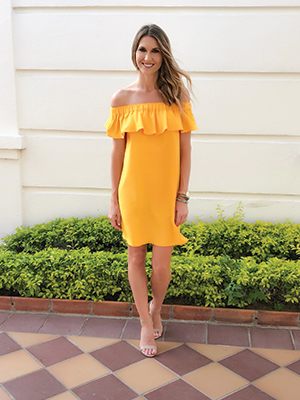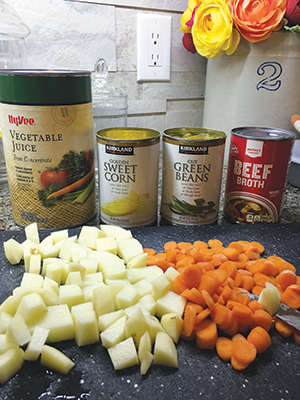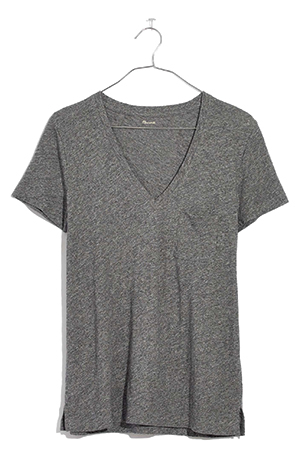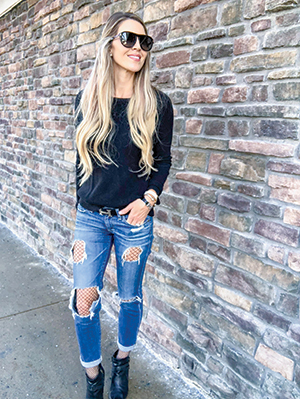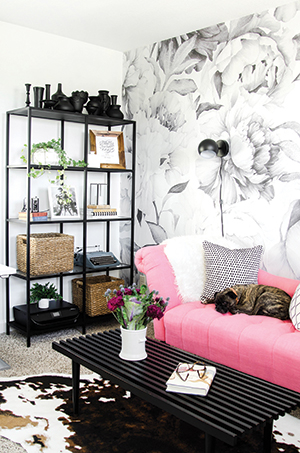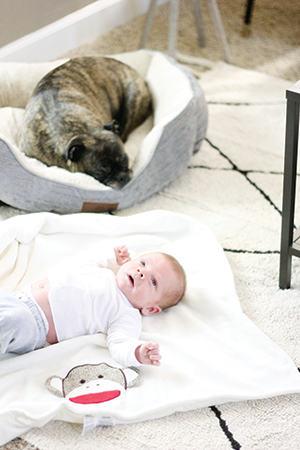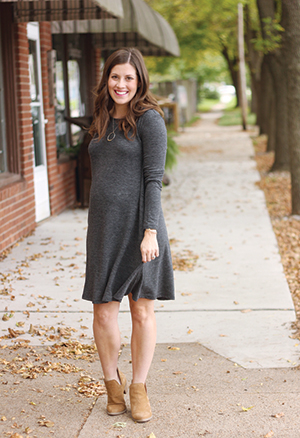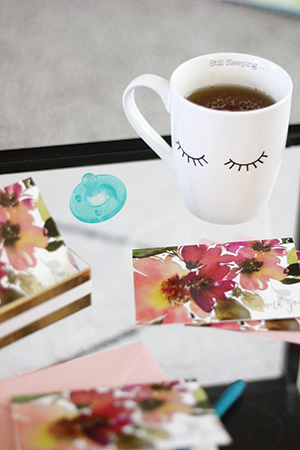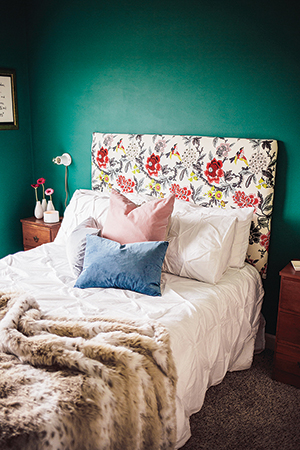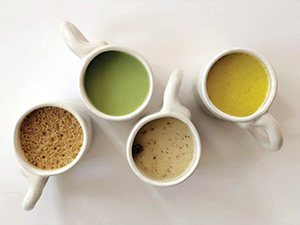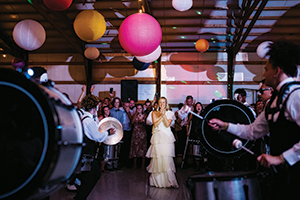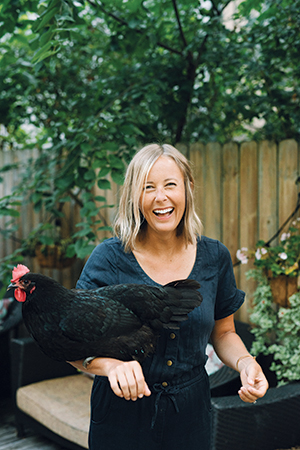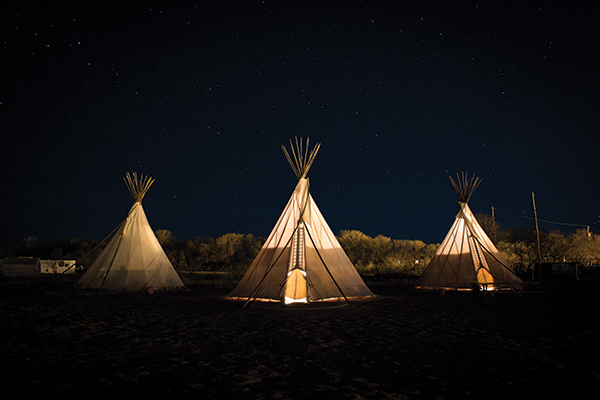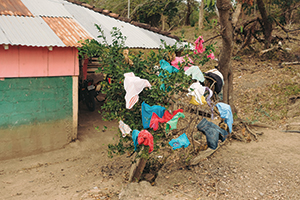Above: Instagram influencer Garrett Cornelison has gained some 159,000 followers by shooting captivating photos that reflect his philosophy that “life on Earth is really kind of amazing.”
Writer: Kellye Carter Crocker
Celebrity endorsements have always been part of the advertising mix. Now, companies are tapping local bloggers and social media mavens to pitch their products. For some of these so-called “micro influencers,” it can be lucrative.
“Everyone is on their phones these days. Brands are reaching out to people in a new way,” says Liz Adelman, co-owner of AdelmanDean Group, a marketing and public relations firm. “These everyday people are becoming, essentially, celebrities.”
Ashley DeJong, 33, a popular West Des Moines fashion and lifestyle blogger, has been approached by strangers while shopping at Target. “They’re like, ‘Hi, I know you,’ ” she says. “They’re like friends, but I’ve never met them.”
DeJong’s relationship with her fans and her reach—nearly 11,000 on Instagram and more than 1,200 unique blog visitors a month—appeal to marketers looking for creative and effective ways to stand out in a noisy, fractured marketplace. DeJong, who works with local and national brands, got a big boost last May when the company behind the LikeToKnow.It app added her to its roster of global style influencers. (She’d been turned down once before.) Love DeJong’s look? With the app, you can click her photos and buy what she’s wearing. If you do, DeJong receives a commission.
“The amount of clothing I’m selling is ridiculous,” says DeJong, who says she earned more than $4,000 through the app during the first month and a half of the year. For many people, LikeToKnow.It makes shopping fun and easy, she says.
$2 Billion Market
Digital influencer marketing has exploded in the last couple of years. Adweek estimated the market to be worth $2 billion last year and predicts it will rise to $10 billion in the next two years. “People want it because they know it works,” DeJong says. “We in Des Moines are behind.”
Des Moines native Garrett Cornelison agrees. “This is where advertising is living right now,” says the 35-year-old photographer, who has shot for dsm, Apple and Coachella, among others.
Although “Iowa will always be home,” Cornelison moved to Los Angeles five years ago because he says there were few photography opportunities in Des Moines. “I would go into these places and say, ‘I want to tell your story and promote what you’re doing,’ ” says Cornelison, who now has 159,000 Instagram followers. “They would kind of go cross-eyed, and say, ‘I’ve heard of Instagram. What is it?’ ”
Even when businesses want to work with local influencers, it’s difficult to find the right match. “Local is really tough,” says Katie Patterson, founder and CEO of the advertising and marketing company Happy Medium. “I don’t think we have a lot of influencers here who are at that level.”
Iowa has plenty of bloggers and social media users, but relatively few have built sizable audiences by creating consistent, quality content and sharing their stories, Adelman says.
When Adelman and her team planned the October opening celebration for Outlets of Des Moines in Altoona, for example, the mall’s East Coast owners wanted to include a blogger event. The idea, successful in larger cities, brings bloggers into stores to interact with fans, style looks, and—of course—share it all on social media. But established local fashion bloggers weren’t available. “It was frustrating to try to explain to our client in Boston that there aren’t that many,” Adelman says.
Need for Education
But Adelman isn’t discouraged. “I look at it more as an opportunity. Des Moines definitely has the fashion, the art, the culture,” she says. “There needs to be a structure in place to educate people more on how to effectively use their platforms.”
That was the plan when Samantha McClelland of Ankeny and three other women co-founded an organization for Midwest bloggers. The group grew much faster than expected, to more than 500 members, and required too much time of its already-strapped volunteer leaders. It fizzled a couple of years ago, McClelland says.
“I would love to see Iowa and Des Moines up their influencer marketing game,” says McClelland, who has worked with Old Navy, H&M and others. “We’re this untapped market for a lot of brands.”
Local bloggers say brands initially approached them about working together. An independent, out-of-state business that sold vintage scarves was the first to reach out to McClelland. “I was like, ‘Oh, my gosh, this company knows me. This is awesome,’ ” she says.
After a while, McClelland started contacting businesses she was interested in promoting. “The worst thing they could say was no, and I’m already not working with them,” she says.
Advertising and Affiliate Programs
Brands work with bloggers in several ways. Some advertise on blogs. Many companies—such as Amazon—offer affiliate programs. When a reader clicks a link and buys a recommended product, the blogger receives a small commission.
Often, brands provide a product or service that they want promoted. “I’m constantly getting products sent to me,” DeJong says. She never knows what might arrive at her door—an unsolicited carton of granola bars, a watch, sippy cups, booze.
The idea: If a blogger loves something, chances are her audience will, too. Fans can discover cool products, learn about upcoming sales, and receive special discount codes and deals.
Companies get a personalized endorsement from a trusted source and access to like-minded consumers with key demographics. “It’s essentially cheap advertising. They’re reaching a market that millennials are using,” DeJong says.
Content Creation
Marketers also hire social media influencers to create content, such as photographs, outfits or recipes, for their digital sites, the blogger’s platform or both.
When Land Rover reps asked Cornelison, the photographer, what he’d do with the new Discovery Sport for a week, he pitched a trek through California’s extreme desert lakes region, from its highest mountain peaks through Death Valley. “They said, ‘Here’s a car and a budget, give us the photos,’ ” says Cornelison, who logged nearly 1,000 miles.
While it was understood Cornelison would return the car (and he did), bloggers often are allowed to keep the products they promote. For some, that’s their only compensation.
DeJong says she got to the point where she was spending so much time styling and photographing outfits for brands, she needed to charge for her services. Payment varies widely. DeJong charges $50 for a single sponsored Instagram post and $450 for a series of three blog posts with multiple Pinterest-ready images and a social media share.
Cornelison, who has a New York agent handling his social media work with brands, says he’s worked with small companies that have a $1,000 budget and with corporations that pay $7,000 for a day of photography and one post on his Instagram. But he has friends with more than a million Instagram followers who make $10,000 to $15,000 per post, he says.
“That is so much better for the brand than having a little banner ad,” he says. “They’d spend hundreds of thousands of dollars and wouldn’t know if anyone saw it.”
By working with digital influencers, Cornelison adds, businesses get custom images and can track responses in real time. “They’re paying for our followers. They want our ‘cool,’ right? And that’s kind of exciting.”
Building an Audience
For successful bloggers, that audience is hard-won. Those who work with brands today have likely spent years building their online presence, sharing themselves through writing and photos, and promoting what they love without compensation.
McClelland started blogging eight years ago, when, as a senior in communications at the University of Iowa, one of her classes required it. “Back then, blogging was kind of a dirty word,” says McClelland, now 30. “I didn’t really tell people I had it.”
From finding her first job to giving birth last December—with marriage and buying a first home in between—McClelland’s blog, “The Brunette One,” has grown up with her. The first couple of years “were a huge learning curve,” she says.
Cornelison picked up many of his early Instagram followers in 2012 during a yearlong, 50-state project with a friend on a book tour. “We’d roll into town, shake hands, and meet people face to face,” he says. “It was very organic.” Quitting his good Des Moines job to do it was scary, he says.
Starting Over
Audience size and interaction—comments, “likes” and shares—are critical for bloggers wanting to work with brands. That’s why it was significant when, in 2016, Kiley Cutler of Des Moines closed her 6-year-old fashion blog, “A Sequin Dress at Breakfast,” and started “Finest Thing” from scratch.
“The [fashion] blog world got so congested. It was time-consuming, and I wasn’t feeling inspired anymore,” says the 33-year-old Cutler, who worked with the Rachel Zoe brand, among others, and attended fashion blogger conventions in New York and Los Angeles. “It was a really fun hobby that pushed me to do a lot of fun things.”
Although friends encouraged Cutler to hold on to her established platform—including her followers and search-engine cred—and simply change her blog’s focus, Cutler says, “I was more concerned about doing what felt more ‘me.’ ”
Cutler, a newlywed, says she was “so obsessed” with her previous blog and spent “way too much time” on it. She’s taking an easier pace with this one, which features healthy cooking, natural beauty, home, style, travel and Cutler’s three backyard chickens—Petunia, Tilly and Stella.
“I’ve always been the type, when I’m excited about something, I want to tell everyone about it,” she says. Blogging “keeps you on your toes, looking for beautiful things every day that you might not otherwise notice.”
Cutler says she’s open to working with brands but isn’t striving for social media stardom. “If I start to look at it too much as a business, I’d start to feel stressed,” she says. “If great things come from it, that would be an extra cool bonus.”
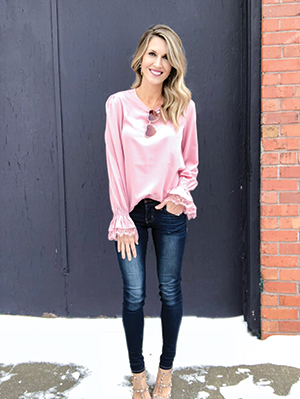 Ashley DeJong
Ashley DeJong
Blog: Lady and Red (ladyandred.com)
Since: 2014
Instagram: @ladyandredstyle
Followers: Almost 11,000
LikeToKnow.It app: Shop DeJong’s looks (she’s also ladyandredstyle there).
How it started: In late 2013, DeJong quit her OB-GYN nursing job to stay home with her newborn daughter, Rowan. (Rowan’s initials are the “RED” in the blog’s title.) DeJong’s blog was born soon after. Shortly after launching her blog, DeJong started selling Stella & Dot jewelry at home parties. “I put two necklaces together that I thought were kind of cool,” she says. Stella & Dot shared her blog post on its site.
Some brands she’s worked with: The Style Bar Boutique and the Olive Tap in Ankeny; Josephs Jewelers and Des Moines-area Gap and Rack Room Shoes; national brands such as the Republic of Tea, Jord watches and Hackamore energy drink.
Blog Quick Hit: “I do wear a lot of lip color because I love it and it is the easiest way to look put together when you are feeling like a hot mess.” NYX Lingerie’s applicator is “too skinny and hard” and the product is “a tad dry/sticky.” But NYX Soft Matte Lip Cream in Prague: “Obsessed with this color! So bright and bold … has a yummy vanilla smell.” (“Drugstore Lip Color Review,” Feb. 14, 2018)
Fun fact: DeJong has filmed commercials for Mediacom and Homemakers and would like to do more commercial work.
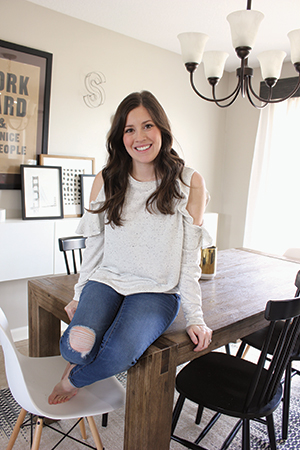 Samantha McClelland
Samantha McClelland
Blog: The Brunette One (thebrunetteone.com)
Since: 2010
Instagram: @_thebrunetteone
Followers: Almost 4,000
Full plate: McClelland, a project manager with Pigott, says her blog “has been the backbone of where I’ve taken my professional life.” Although her blogging has slowed a bit since the birth of her son, Jack, in December, she has no plans to stop. As a wife, mom and full-time employee, “I’m giving myself to a lot of people,” she says. “I want to do the blog for myself. I’ve worked really hard to get where I am. It’s something I love and I’m passionate about.”
Some brands she’s worked with: Old Navy, H&M, J. Crew, Wayfair, Homemakers, Minted, Havenly, Elle magazine.
Blog Quick Hit: “My mom helped us out a few days last week, and we were able to go to lunch and then to Gordmans for our first outing!” Among the items McClelland bought: “the perfect mug” with a sleep motif. “[H]e sleeps like a champ,” she wrote of her newborn, “… but give me ALL. THE. COFFEE.” (“Easy Like Sunday Morning” [one month into parenthood], Jan. 29, 2018)
Fun fact: After winning a blogging contest in 2013, McClelland flew to New York Fashion Week to create street style posts for Wallis, a British women’s clothing brand.
Kiley Cutler
Blog: Finest Thing (finestthing.com). Cutler also maintained a fashion blog, “A Sequin Dress at Breakfast,” for six years before closing it to start her current blog.
Since: 2016
Instagram: @kileycutler
Followers: Almost 3,500
Reinvention: On the last day of her honeymoon last summer, Cutler quit her full-time job as a wholesale jewelry rep. In July she opened the Cutler Kitchen, a state-inspected, licensed home bakery specializing in healthy treats. They’re available by special order and at Horizon Line Coffee. (thecutlerkitchen.com, @thecutlerkitchen)
Some brands she’s worked with: Neat Method home organizing in Des Moines; she’s in talks with a cooking-related brand.
Blog Quick Hit:
“They are SO sweet and friendly. … They each have their own quirky little personality, and often spend hours just outside our back door looking inside at me.” (“Life with Chickens,” Sept. 26, 2017)
Fun fact: Cutler, a Rachel Zoe fan, bought one of the celeb designer’s dresses—simple, sleeveless, black and white—to wear to a fashion blogger conference in Los Angeles because reps for Zoe were scheduled to be there. Sure enough, two young women from Zoe’s organization approached Cutler, and she ended up working with them. “They were so sweet,” Cutler says. “That dress was worth every penny.”
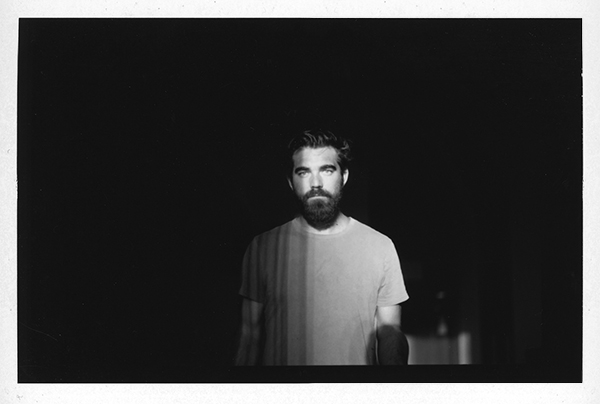 Garrett Cornelison
Garrett Cornelison
Website: GarrettCornelison.com (no blog). “I get way more visitors to my Instagram than I do to my professional website,” he says.
Instagram: @reallykindofamazing.
Bio: “We are important, our lives are important, and our details are worthy of being recorded. Life on Earth is really kind of amazing.”
Followers: 159,000
Game changer:
In the summer of 2012, Cornelison attended a small, invitation-only retreat for established and emerging photographers. There was no curriculum or plan, just an opportunity to hang out in upstate New York for a week, making pictures and friends. “It really cracked the boundaries of what I thought photography was going to be for me, especially in Des Moines,” Cornelison says.
Some brands he’s worked with: Apple, Coachella, Lincoln Motor Co., eBay, Kind snacks, Bank of America, DSW, Hollister, GQ.
Instagram Quick Hit: “I’ve been volunteering with @thelatitudeproject this week in Central America to help communities ravaged by Hurricane Nate. Helping to bring clean water to 54 families through portable filtration devices. Reach out if you want to get involved.” (Jan. 28, 2018, Nicaragua)
Fun fact: In 2014, Huffington Post named Cornelison one of 27 Instagram photographers “you should follow right now,” gaining him about 10,000 followers overnight. When Time magazine recommended an Instagrammer from each state, Cornelison repped Iowa.
In Bloggers We Trust
“Social media influencer” might sound glamorous, but it’s a lot of hard work.
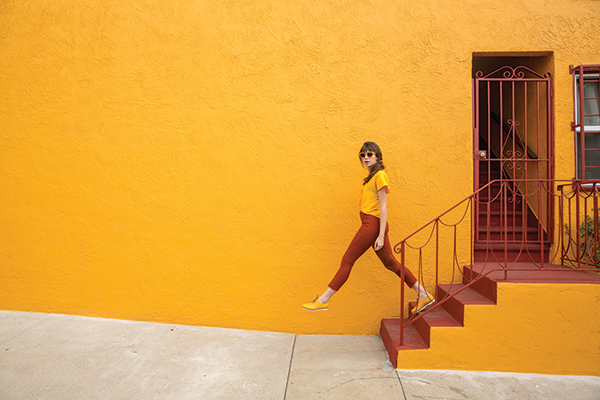
Can you make me a social media star? “A few years ago we never got that question,” says Katie Patterson, founder and CEO of Happy Medium. Now, “multiple” people have asked if she can make it happen for them.
West Des Moines fashion blogger Ashley DeJong receives so many questions from would-be bloggers, she answered them in a detailed post. (See ladyandred.com, Jan. 23, 2018.)
Digital influencer marketing can be a great business, Patterson says: “It works for a lot of different kinds of people.” And the market isn’t saturated, especially in Des Moines, she says. Patterson’s company can provide the tools to create a solid online foundation. She’s working with a local influencer on that now.
But Patterson says she can’t make anybody a star. They have to put in the effort. “It’s paid like a full-time business because it is,” she says.
“Once people do start [blogging],” says Ankeny blogger Samantha McClelland, “they realize how much work it is. It’s a game of hustle.”
Here’s what it takes:
Attract an Audience
When DeJong started blogging four years ago, she knew Instagram followers were important—so she bought 1,000. “It’s an icky feeling when you do,” says DeJong, who has almost 11,000 followers now. The fakes, which cost $40, didn’t seem to help or hurt, she says, and they drifted away. “They are bots living outside of the country who don’t know who you are,” says DeJong, who advises bloggers not to repeat her mistake. “It’s a total scam.”
There’s no “magic number” of followers that bestows “influencer” status, local marketing pros say. Influencer marketing is part of an overall strategy based on a client’s goals. Frankly, it’s also too early to say what a target number might be. “We don’t have any metrics behind it yet,” says Liz Adelman, co-owner of AdelmanDean Group, which specializes in public relations, marketing and communication.
Industry publications, though, say brands can reap big opportunities by going small. “Micro influencers” have fewer followers than the “macros” but generally interact more, which can increase brand awareness and drive sales—for far less money.
Developing a following takes patience, Des Moines blogger Kiley Cutler says. “I think the whole first year it was just my mom and a few friends who were reading it,” she says. “You need to do it for your own satisfaction first, and if brands want to work with you, that’s a total bonus.”
Develop Relationships
Interaction with followers is essential for those hoping to promote products through their blogs. Naturally, then, a black market has sprung up selling automated “likes” and fake comments. This violates social media platforms’ terms of service, and the companies are cracking down. Another consideration: Bots don’t buy.
As bloggers and followers get to know each other, a community naturally develops. “You come back for a reason,” Adelman says. “You feel this personal connection. That, I think, is huge.”
Create Good Content
Successful bloggers provide a reliable flow of high-quality, interesting, entertaining and/or helpful information. But even that isn’t enough. There’s an intangible something—maybe voice, aesthetic or how they see the world—that sets them apart.
When DeJong began blogging, her readers surprised her. If she posted a photo of a crockpot dinner, they asked for the recipe. If she provided details about a favorite outfit, they wanted to know about her lipstick, too. “The more I share about my life, the more invested people become,” she says.
DeJong believes her content and the quality of her photos helped her become a LikeToKnow.It influencer. Then earlier this year, DeJong added a new feature to her blog: shopping for her followers. After polling her Instagram fans to gauge interest, she posted 33 wedding rehearsal dresses “for every style and budget.” Pre-internet, this was the realm of fashion editors.
Deal With the Negatives
If you’re working on the internet, tech headaches are virtually guaranteed. When DeJong joined LikeToKnow.It, for example, it wouldn’t synch with WordPress, the popular blogging platform she uses. She eventually got that worked out.
Because social media is ever-changing, bloggers need to be flexible and adaptable, McClelland says. It’s also important to maintain your own website so you’re not at the mercy of a single social media channel. “Algorithms are changing every day,” she says. “What I have control over is my blog.”
Don’t forget the trolls. McClelland and Cutler say they’ve had little interaction with online haters, but DeJong, who has far more followers, isn’t as lucky. “The criticism is constant,” she says.
DeJong has been told she’s fake, her shirt looks bad, and she needs to eat a cheeseburger. When DeJong posted photos from a girls’ night out, she was told to go home and take care of her child. “I think they’re unhappy with themselves,” she says. “You just kind of have to feel sorry for these people.”
Maintain Trust
Here’s McClelland’s promotional rule of thumb: If she wouldn’t rave about a product to her mom or best friend, it’s not going on her blog.
McClelland, DeJong and Cutler agree that a brand and its products have to be a good fit for them, their blogs and their audiences. If they share it, they love it.
A high-end retailer recently sent DeJong a black T-shirt with a tiny bow on the sleeve. It cost $50, which DeJong says was a “waste of money. … I really try to keep my content honest. If I don’t love it, I send it back.”
Patterson, the Happy Medium CEO, says influencers need to be strategic and think long term. “You have to be very careful deciding who to partner with,” she says. “You have to be comfortable saying no to things.”
Transparency is critical to trust—and it’s the law. As influencer marketing has exploded, the line between advertising and other content has blurred. In response, the Federal Trade Commission last fall updated its endorsement guidelines and filed its first complaint against individual social media influencers.
Bloggers and those on social media who promote products must clearly and conspicuously tag those posts. The FTC accepts #ad and #sponsored—and they can’t come at the end of a block of hashtags.
“You have to educate your readers,” McClelland says. “Some don’t understand the business side of blogging, just being transparent about that. Not only do I have to do that, I want to do it.”


